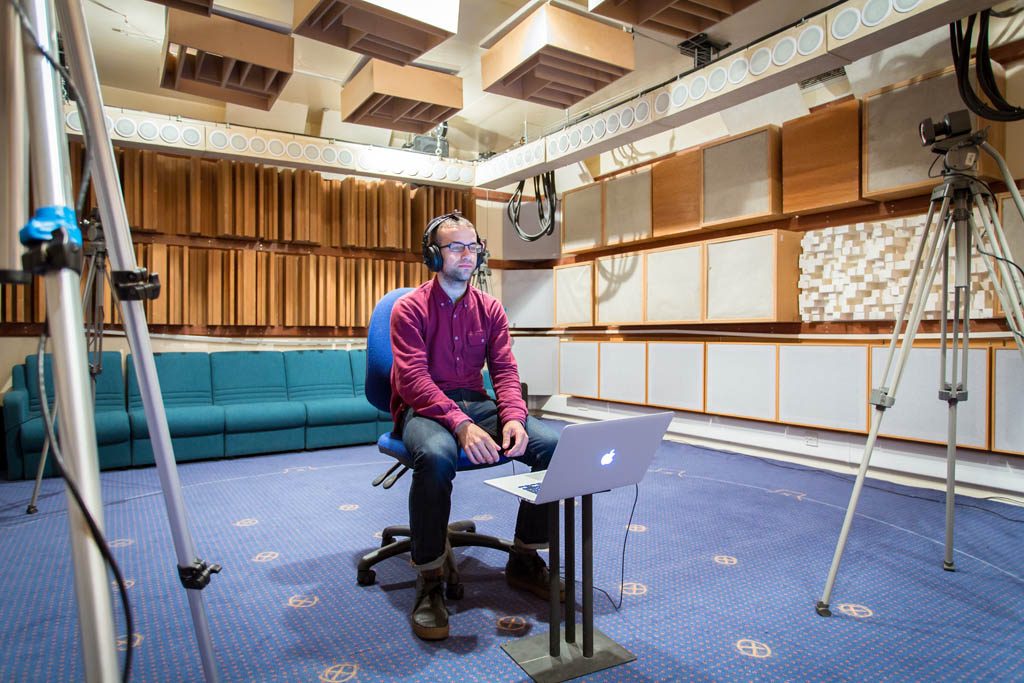Acoustic Room Design
Let’s come back indoors and think about the many different types of buildings which need to have special acoustic design. In concert halls, recording studios for music, TV and radio, and even class-rooms we need to control the amount of sound reflected from the walls, floor and ceiling. These reflections disturb the original sound and cause unwanted echoes and reverberation. In concert halls and classrooms these echoes mean that the original sound can become difficult to hear properly – there can be poor intelligibility.
Try this experiment – go into a small bare room like a bathroom and make noise – a handclap will do. The direct sound arriving at your ears directly from your hands is quickly followed by reflections from the walls, ceiling and floor. These reflections can cause the sound to be coloured, or to put it another way, the timbre of the sound will change. (Timbre is a French word which describes sound quality).
The diagram below shows a plan view of a small rectangular room, highlighting a first order (involving only one reflecting surface) reflection from the top wall in red. In small rooms, first order reflections tend to be loud and arrive very soon after the direct sound. You can imagine the waves bouncing around like balls on a pool table. Second order reflections are like shots played off two cushions, third order off three etc etc. The higher-order the reflection, the further the wave has travelled and the later they arrive. These later reflections all blend in together, and cause reverberation.

There are two basic forms of acoustic treatment to deal with reflections: absorption and diffusion.
Absorbers
One solution to reflections is to apply absorption to the wall, which turns acoustic energy into heat – this is a kind of damping. This absorption can be a specialist product such as those made of mineral wool, open cell foam, or recycled fibrous material like paper-waste, but absorption can also be provided by more commonplace object such as curtains, sofas or carpets. It can be a tricky balance for an acoustic designer – too much absorption, and the room will sound dead. The sound quality would be like listening outdoors, where only the direct sound from a source is heard (assuming soft ground and an absence of nearby buildings).
Diffusers
Acoustic Diffusers are used to disperse reflections spatially – to spread out reflected sound energy over a wide range of angles – as shown in the diagram above with the black path. Some diffusion can be obtained by carefully placing book cases and other furniture in a room. But specialist (=expensive!) diffusing surfaces can achieve greater diffusion in a more controlled manner. By using sound diffusers, first order reflections are dispersed to be heard later by the listener, and by removing and delaying early reflections, diffusion and absorption can make a small music studio sound like a larger room. Consequently, design is all about locating the reflection points for first order reflections, and applying appropriate treatment there. An extreme example is shown in the listening room photo below.

No absorbers
One place where acoustical engineers don’t want absorption is a special laboratory called a transmission suite. This is used to test how good walls are at stopping sound getting from one room to another.